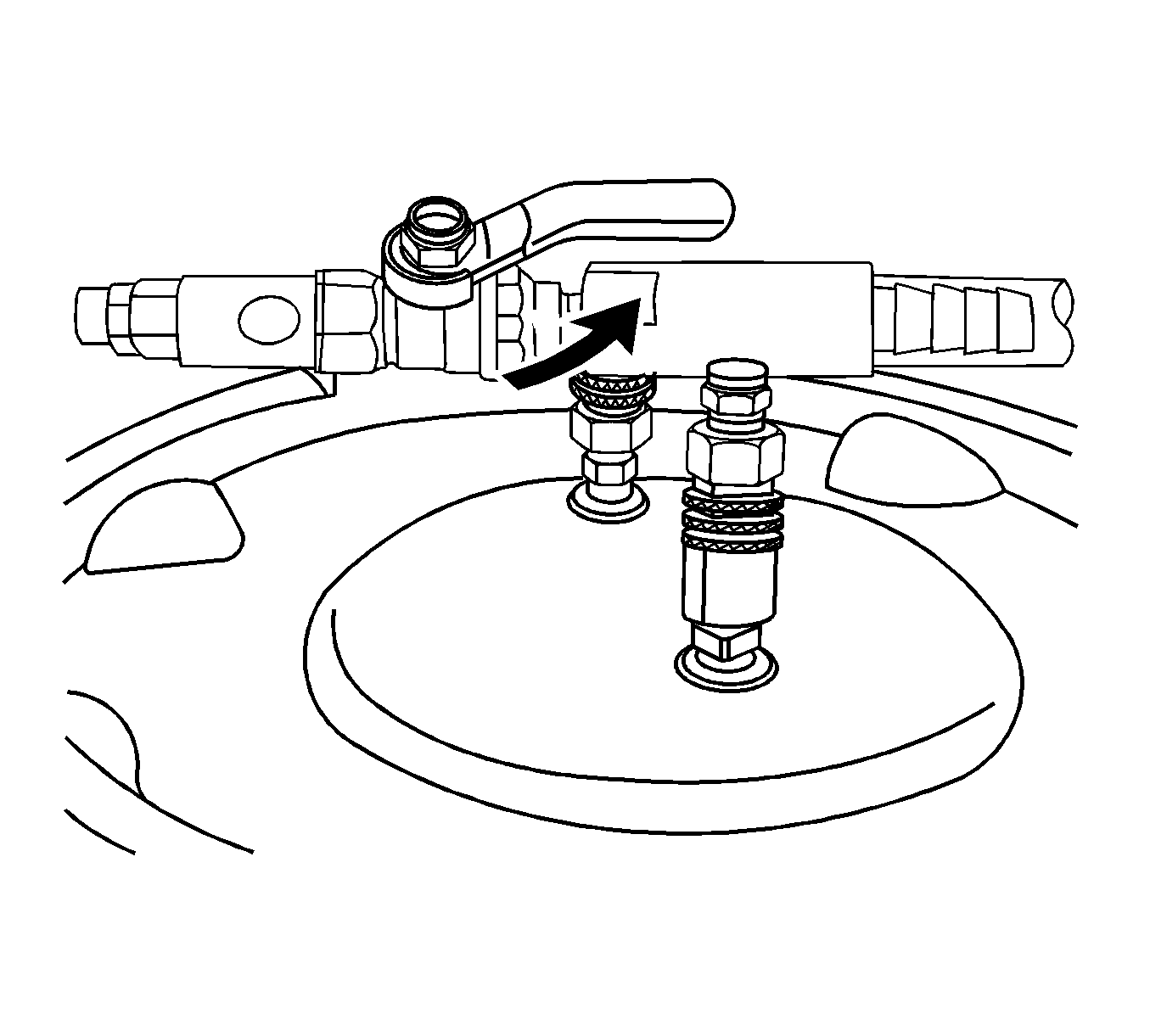Cooling System Draining and Filling Static Fill
Draining Procedure
- Place the coolant container under the radiator drain valve located at the bottom of the left radiator end tank.
- Open the drain valve to start the flow of coolant. Coolant will drain slowly until the surge tank cap is removed.
- Remove the surge tank cap from the surge tank. Allow the coolant to drain from the system.
- Additional coolant can be drained from the engine by removing the engine block drain plug.
- Follow the appropriate procedure based on the condition of the coolant.
Caution: In order to avoid personal injury, do not remove the cap or open the cooling system drains from a hot system. Allow the system to cool first.

Important: A 7.6 liter (8 qt) coolant container will be needed.
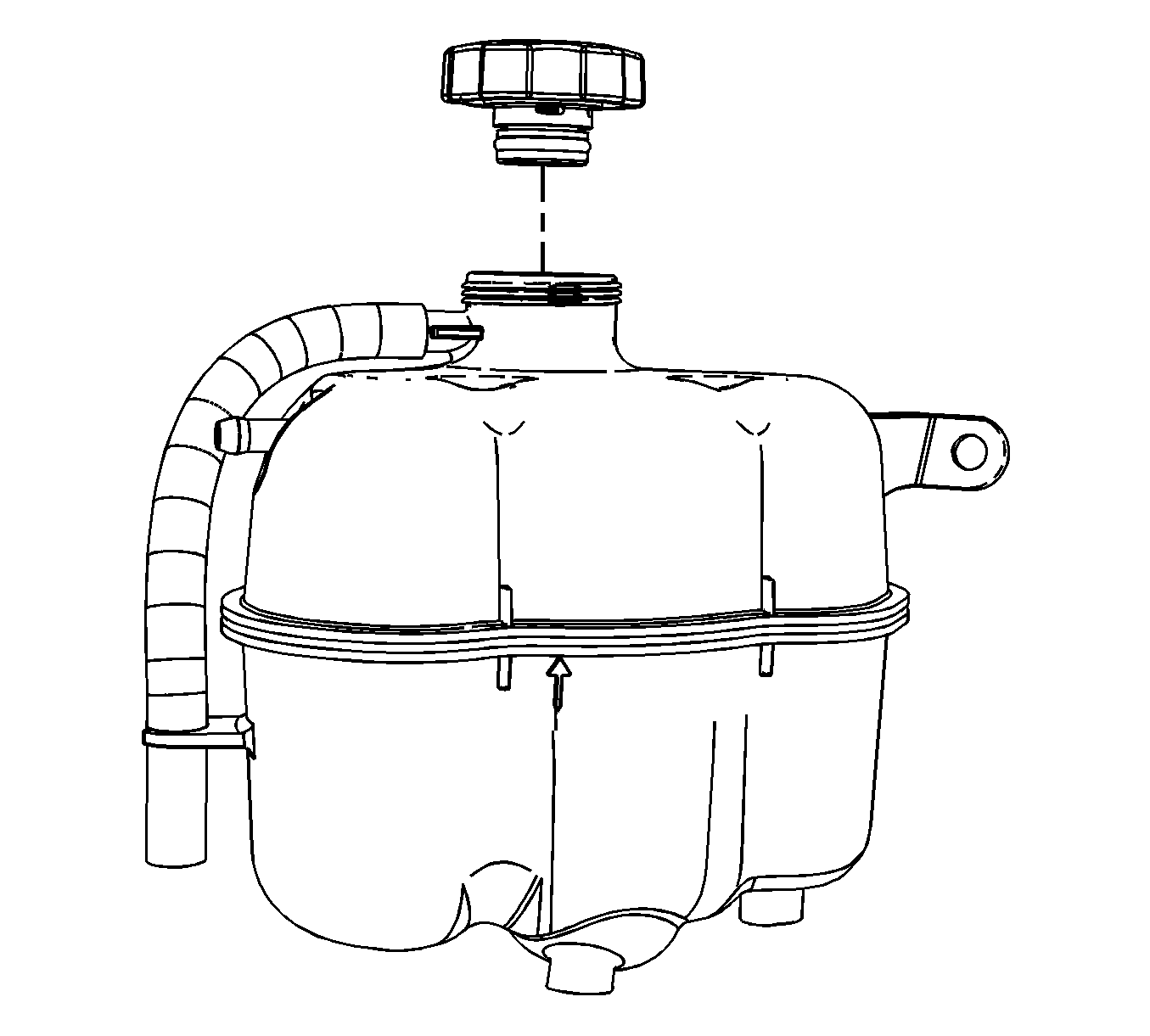
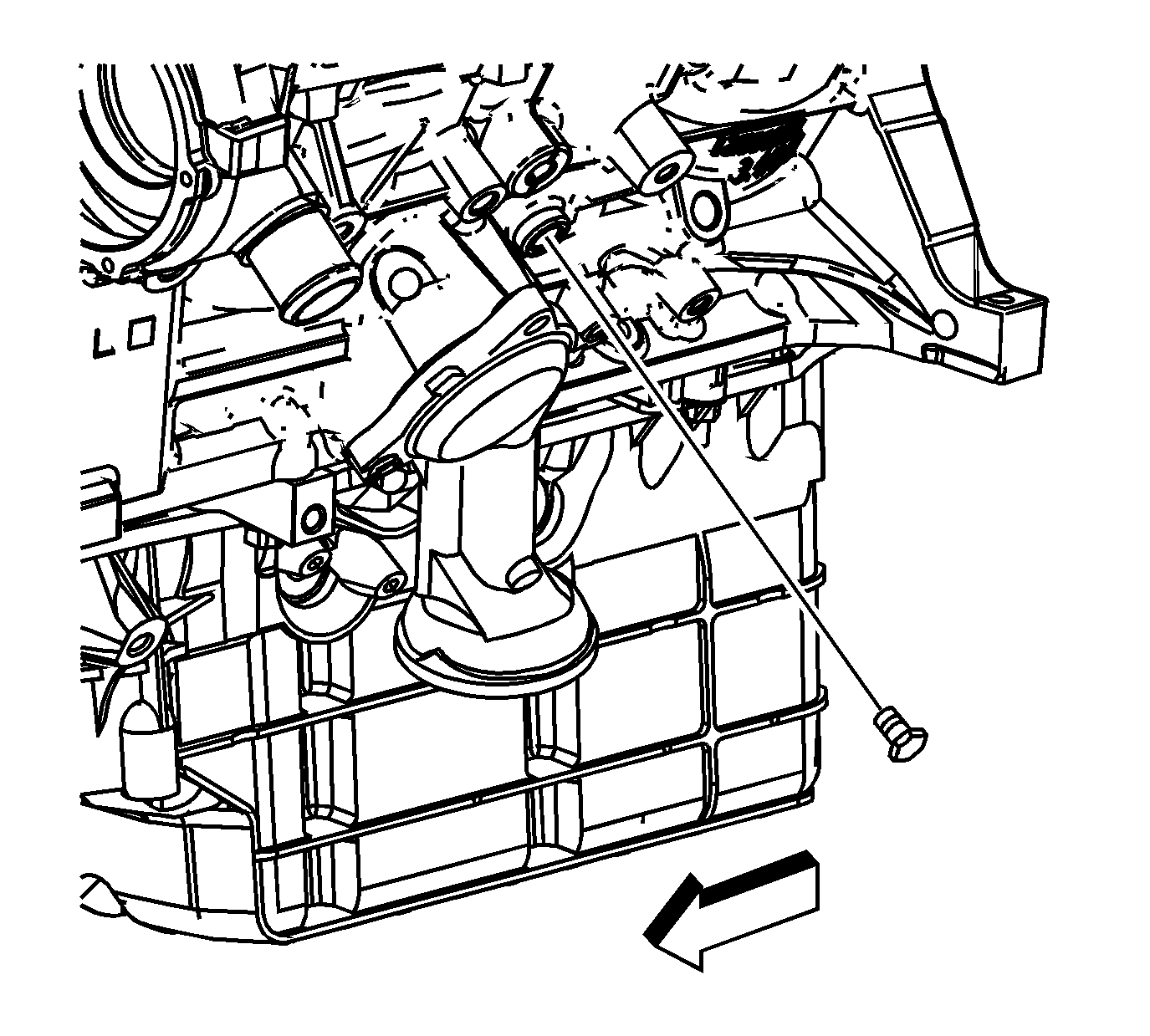
| • | Normal in appearance--Follow the filling procedure. |
| • | Discolored--Follow the flush procedure. Refer to Coolant System Flushing . |
Filling Procedure
Important: When the radiator is drained, a minimum of 5 liters (5.28 qts) of coolant is typically drained from the cooling system. During the fill procedure, a minimum of 5 liters (5.28 qts) of coolant should be added to the cooling system before the vehicle is returned to the customer.
- Close the drain valve on the left radiator end tank.
- Install the engine block drain plug, if removed.
- Open the air bleed screw on the water pump tower.
- Slowly add a mixture of 50/50 DEX-COOL antifreeze and clean water to the surge tank. Refer to Approximate Fluid Capacities for cooling system capacity.
- Install the surge tank cap.
- Run the engine and cycle the vehicle from idle to 3,000 RPM in 30 second intervals until the engine cooling fans come ON.
- Return the engine to idle, idle for 30 seconds then turn the engine OFF.
- Allow the vehicle to cool.
- Add coolant to the surge tank until the level is approximately 25 mm (1 in) above the top of the Cold Fill Range at the surge tank seam.
- Install the surge tank cap.


Notice: All entrapped air must be purged from the powertrain cooling system before the final coolant level can be determined. Proper coolant level is critical to avoid engine damage.
Important: The vehicle must be level when filling the cooling system.
| 4.1. | As the system begins to fill, watch for coolant at the water pump tower. |
| 4.2. | As coolant begins to seep from the air bleed, close the air bleed screw. |
| 4.3. | Once the bleed screw is closed, continue to add coolant until a minimum of 5 liters (5.28 qts) is added to the cooling system. Start the engine and run at idle to add the remaining coolant. |
Cooling System Draining and Filling GE 47716 Fill
Tools Required
| • | J 26568 Coolant and Battery Fluid Tester |
| • | GE-47716 Vac N Fill Coolant Refill Tool |
| • | J 42401 Radiator Pressure Adapter |
Draining Procedure
- Place the coolant container under the radiator drain cock located at the bottom of the right radiator end tank.
- Open the drain valve to start the flow of coolant. Coolant will drain slowly until the surge tank cap is removed.
- Remove the surge tank cap from the surge tank. Allow the coolant to drain from the system.
- Close the drain valve once the coolant has drained from the radiator.
- Additional coolant can be drained from the engine by removing the engine block drain plug.
- Install the engine block drain plug once the coolant has drained from the engine.
- Inspect the coolant.
- Follow the appropriate procedure based on the condition of the coolant.
Caution: In order to avoid personal injury, do not remove the cap or open the cooling system drains from a hot system. Allow the system to cool first.

Important: A 7.6 liter (8 qt) coolant container will be needed.


| • | Normal in appearance--follow the filling procedure. |
| • | Discolored--follow the flush procedure. Refer to Coolant System Flushing. |
Vac-N-Fill Procedure
- Install J-42401-2 into the surge tank fill neck.
- Install J-42401-3 to the surge tank fill neck.
- Attach the Vac N Fill cap to the J-42401-3.
- Attach the vacuum gauge assembly to the Vac N Fill cap.
- Attach the fill hose to the barb fitting on the vacuum gauge assembly.
- Pour the coolant mixture into the graduated reservoir.
- Place the fill hose in the graduated reservoir.
- Install the vacuum tank on the graduated reservoir with the fill hose routed through the cut-out area in the vacuum tank.
- Attach the venturi assembly to the vacuum tank.
- Attach a shop air hose to the venturi assembly.
- Attach the vacuum hose to the vacuum gauge assembly and the vacuum tank.
- Open the valve on the venturi assembly. The vacuum gauge will begin to rise and a hissing noise will be present.
- Continue to draw vacuum until the needle stops rising. This should be 610-660 mm Hg (24-26 in Hg).
- To aid in the fill process, position the graduated reservoir above the surge tank.
- Slowly open the valve on the vacuum gauge assembly. When the coolant reaches the top of the fill hose, close the valve. This will eliminate air from the fill hose.
- Close the valve on the venturi assembly.
- If there is a suspected leak in the cooling system, allow the system to stabilize under vacuum and monitor for vacuum loss.
- Open the valve on the vacuum gauge assembly. The vacuum gauge will drop as coolant is drawn into the system.
- Once the vacuum gauge reaches zero, close the valve on the vacuum gauge assembly and repeat steps 12-18.
- Detach the Vac N Fill cap from the J-42401-3.
- Remove J-42401-2 from the surge tank fill neck.
- Add coolant to the system as necessary.
- Inspect the concentration of the coolant mixture using J 26568 .
- Detach the vacuum hose from the vacuum gauge assembly.
- Attach the extraction hose to the vacuum hose.
- Open the valve on the venturi assembly to start a vacuum draw.
- Use the extraction hose to draw out coolant to the proper level.
- The vacuum tank has a drain valve on the bottom of the tank. Open the valve to drain coolant from the vacuum tank into a suitable container for disposal.
Caution: To avoid being burned, do not remove the radiator cap or surge tank cap while the engine is hot. The cooling system will release scalding fluid and steam under pressure if radiator cap or surge tank cap is removed while the engine and radiator are still hot.
Important: To prevent boiling of the coolant/water mixture in the vehicle’s cooling system, do not apply vacuum to a cooling system above 49° C (120° F). The tool will not operate properly when the coolant is boiling.
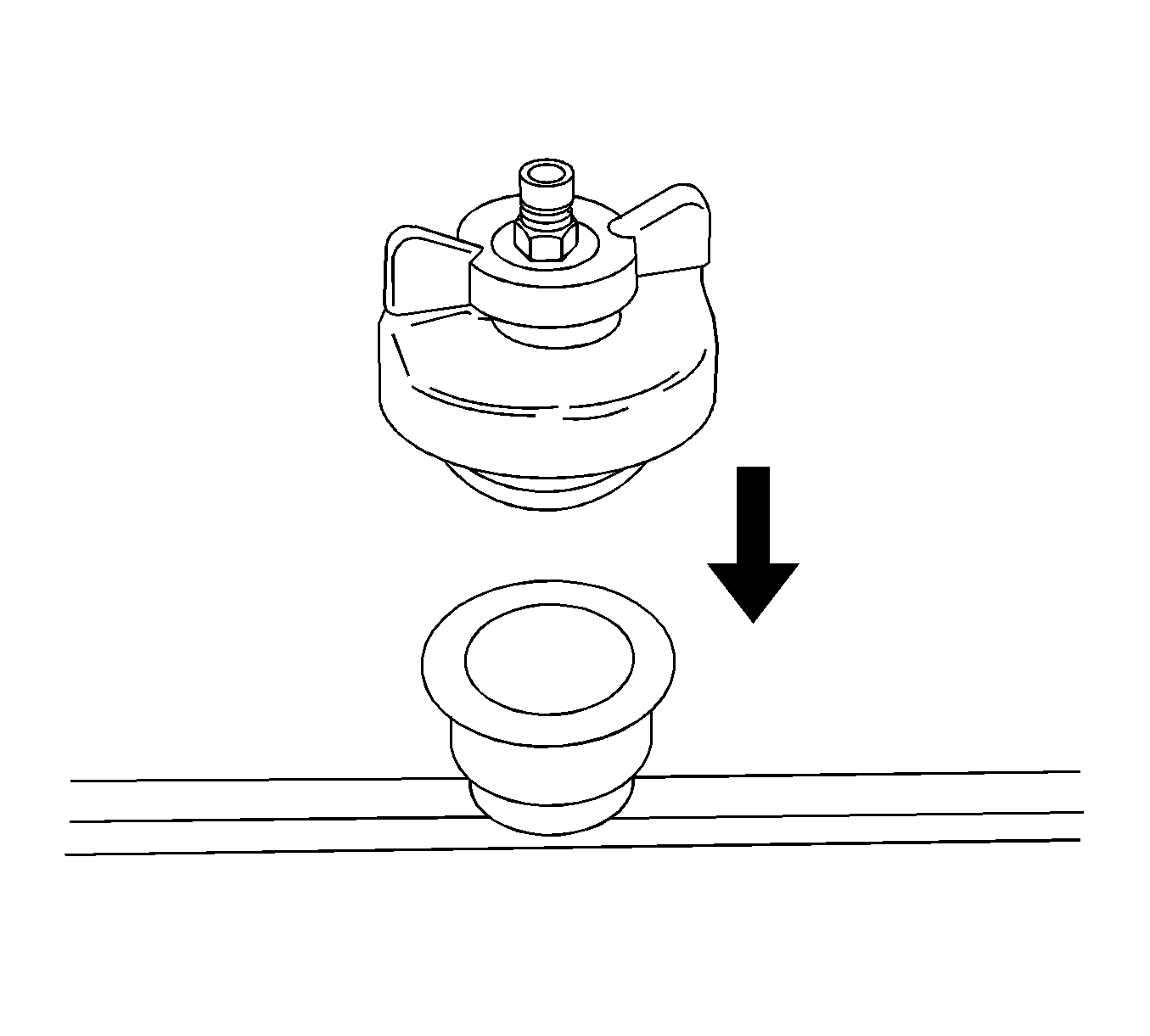

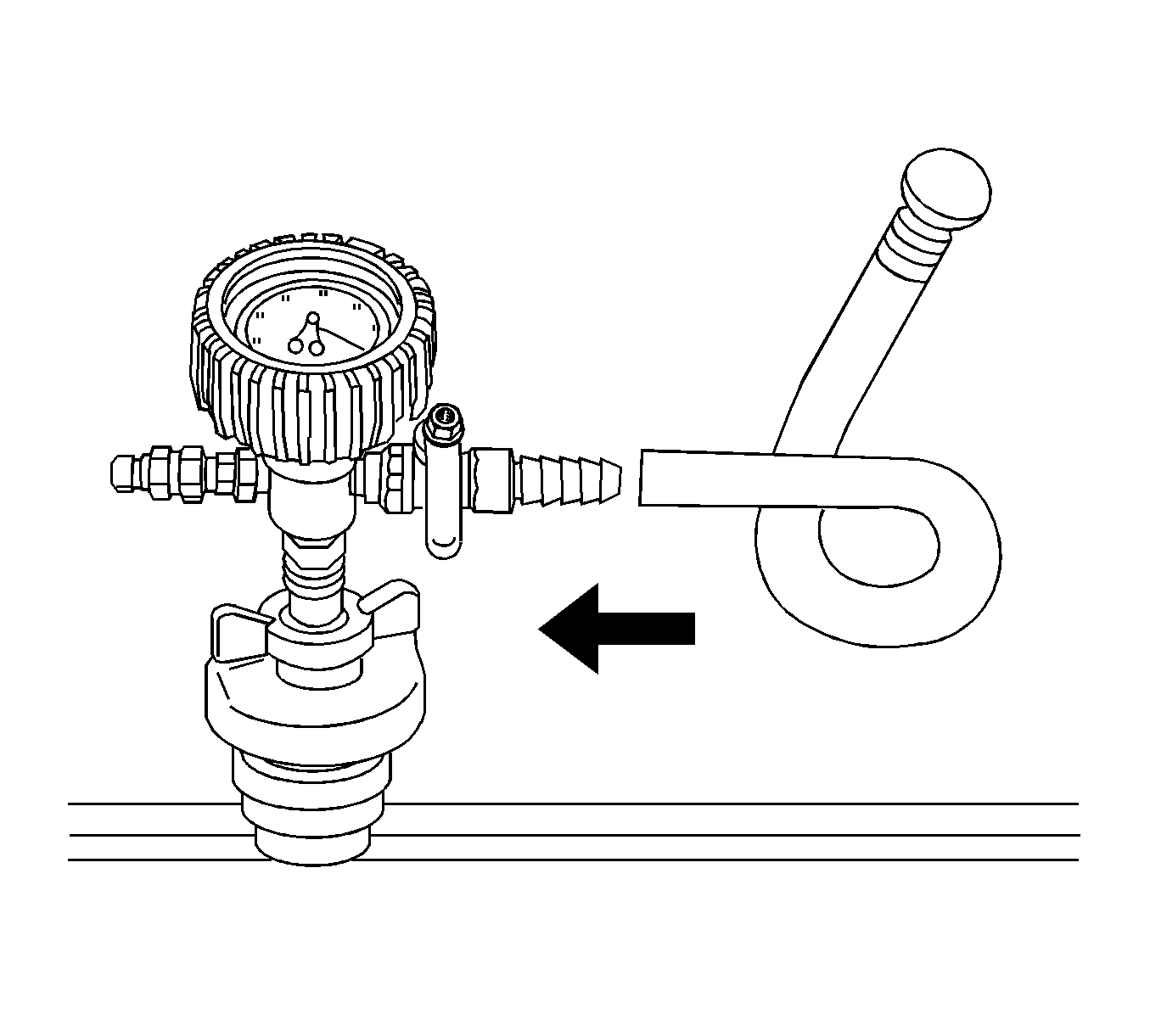
Ensure that the valve is closed.

Important: Use a 50/50 mixture of DEX-COOL antifreeze and clean, drinkable water.
Always use more coolant than necessary. This will eliminate air from being drawn into the cooling system.Important: Prior to installing the vacuum tank onto the graduated reservoir, ensure that the drain valve located on the bottom of the tank is closed.


Ensure the valve on the venturi assembly is closed.

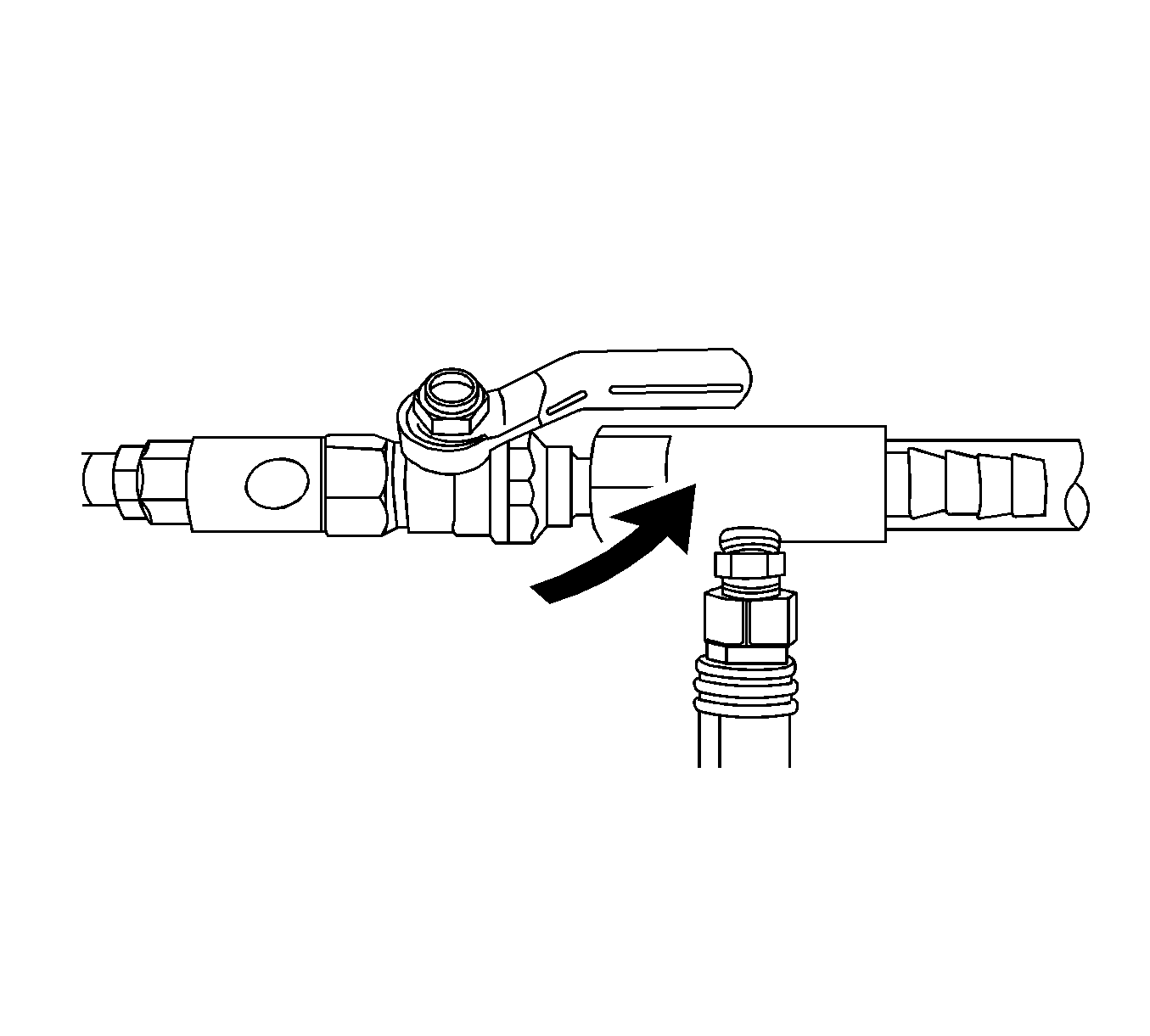

Cooling hoses may start to collapse. This is normal due to vacuum draw.

If vacuum loss is observed, refer to Loss of Coolant.


Important: After filling the cooling system, the extraction hose can be used to remove excess coolant to achieve the proper coolant level.
